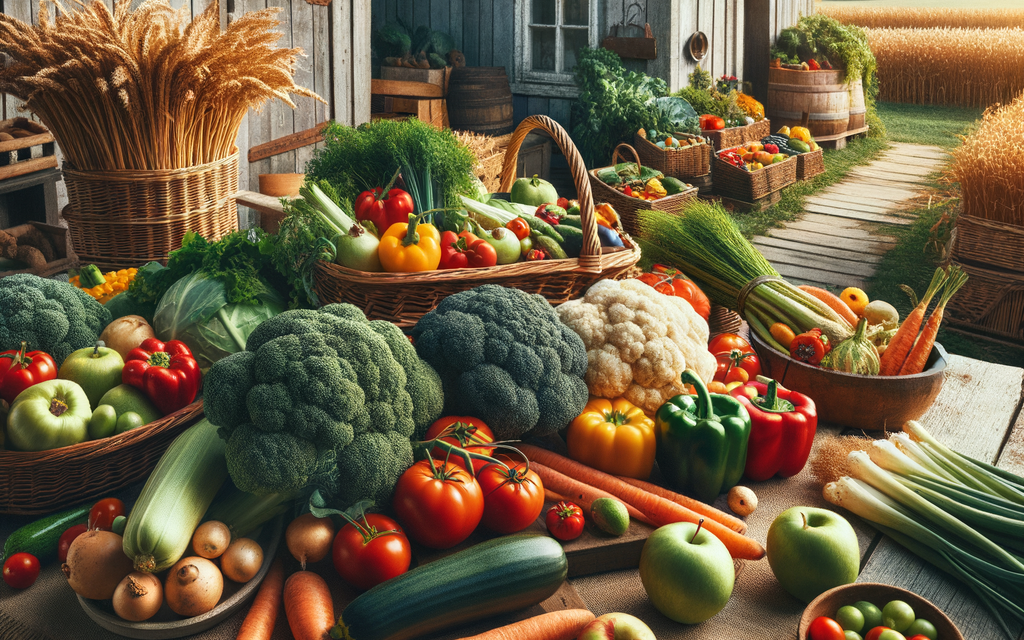Introduction
Embracing organic and non-GMO food is more than a dietary choice—it’s a commitment to your health and the environment. With the growing concerns about the long-term effects of genetically modified organisms (GMOs) and pesticide use, many women are turning to organic and non-GMO options to nourish their bodies with pure, unadulterated food. As we move through the seasons, the availability of organic produce changes, offering a variety of flavors and nutrients to keep your diet diverse and healthful. Let’s explore how you can incorporate these wholesome choices into your lifestyle.
Step 1: Understanding Organic and Non-GMO Labels
- Organic: This label indicates that the food has been grown without synthetic pesticides, fertilizers, or genetically modified seeds. It also means that organic meat and dairy come from animals that haven’t been given antibiotics or hormones.
- Non-GMO: A non-GMO label ensures that the food is free from genetic engineering. However, it doesn’t mean the product is organic or pesticide-free unless it also carries an organic certification.
Tip: Always look for the USDA Organic or Non-GMO Project Verified seals for assurance of quality.
Step 2: Seasonal Shopping for Organic Produce
Seasonal shopping is not only more economical but also ensures that you’re eating fruits and vegetables at their peak freshness and nutritional value. Here’s how to make seasonal organic choices:
- Spring: Look for leafy greens like spinach and arugula, as well as strawberries and asparagus.
- Summer: Enjoy a bounty of berries, tomatoes, cucumbers, and peaches.
- Fall: Opt for root vegetables, apples, pears, and squashes.
- Winter: Choose hearty greens, citrus fruits, and winter squashes.
Tip: Familiarize yourself with a seasonal produce guide for your region to make the best choices.
Step 3: Prioritizing Your Organic Purchases
While it’s ideal to buy everything organic, it may not be practical or affordable for everyone. Prioritize according to the Environmental Working Group’s (EWG) ‘Dirty Dozen’ list, which highlights produce with the highest pesticide residues.
Common Mistake: Don’t assume all produce carries the same pesticide risk. Some fruits and vegetables, like avocados and pineapples, have thick skins that protect them from pesticide exposure.
Step 4: Incorporating Non-GMO Foods
Focus on whole foods like grains, legumes, nuts, and seeds that are often genetically modified. When purchasing processed foods, look for the Non-GMO Project Verified seal.
Tip: Buying organic is a surefire way to avoid GMOs since the organic certification process prohibits their use.
Step 5: Cooking and Meal Planning with Organic and Non-GMO Foods
Plan your meals around the organic and non-GMO foods you’ve sourced. Use them as the foundation of your diet, and supplement with conventional items when necessary.
Common Mistake: Don’t let the lack of organic options derail your healthy eating plans. It’s better to eat conventional fruits and vegetables than none at all.
Step 6: Growing Your Own Organic Produce
If you have the space, consider starting an organic garden. This can be a rewarding way to ensure the quality of your food and reduce your carbon footprint.
Tip: Start small with herbs or salad greens, which are easy to grow and can thrive even on a windowsill.
Conclusion
Making the switch to organic and non-GMO foods is a powerful step toward a healthier lifestyle. By understanding labels, shopping seasonally, and planning your meals, you can enjoy the benefits of these nutritious choices. Remember, every small change contributes to a larger impact on your health and the environment. Embrace the natural rhythms of the seasons and let them guide you to a vibrant, health-conscious life.










